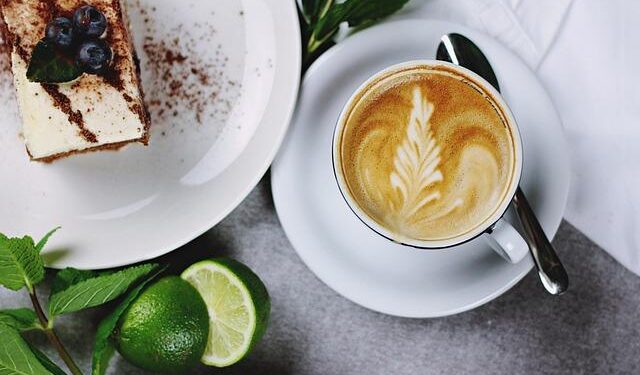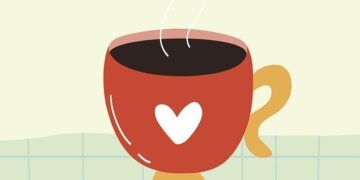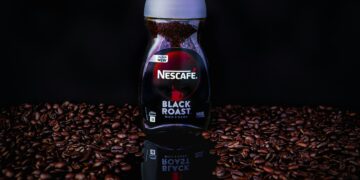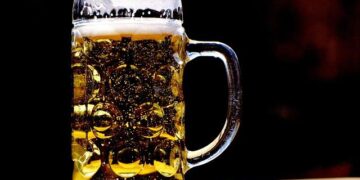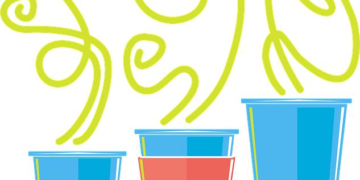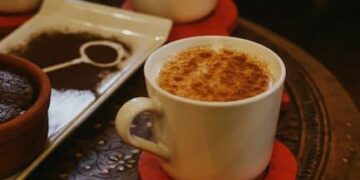Table of Contents
Section 1: An Introduction to Caffeine in Ready-to-Drink Coffee: A Primer for the Informed Consumer
The Landscape of “Store-Bought” Iced Coffee
The request for the caffeine content in “Starbucks store-bought iced coffee” opens the door to a surprisingly vast and complex world of products. Beyond a simple, chilled version of their café coffee, Starbucks, in partnership with PepsiCo, has developed an extensive portfolio of Ready-to-Drink (RTD) beverages designed for retail consumption.1 This portfolio is a carefully curated extension of the in-cafe experience, offering consumers a wide spectrum of flavors, formats, and, most importantly, caffeine levels.3 The products available in grocery and convenience store coolers range from indulgent, dessert-like bottled Frappuccino drinks and potent Doubleshot Espresso cans to large, multi-serve jugs of iced coffee and highly concentrated cold brew designed for home preparation.5
This diversity is not accidental; it reflects a sophisticated market segmentation strategy. Each product line is engineered to meet a distinct consumer need. The bottled Frappuccino, for instance, targets a consumer seeking a sweet, creamy, coffee-flavored treat with a mild caffeine lift. The Doubleshot Energy line competes directly in the energy drink aisle, appealing to those who need a functional boost. The multi-serve iced coffee jugs offer convenience and customizability for the daily coffee drinker at home. Finally, the cold brew concentrates cater to the burgeoning market of home baristas who desire the premium taste and higher potency of cold brew coffee.7 Understanding this strategic landscape is the first step for any consumer looking to make an informed choice. The term “iced coffee” is not a monolith but a gateway to a product family where caffeine content can vary by more than 400% from one product to the next.
Factors Influencing Caffeine Content
The final caffeine concentration in any given Starbucks RTD product is the result of a complex interplay of several factors. While consumers may be familiar with some of these variables from the world of whole-bean coffee, their application in a mass-produced, pre-packaged beverage is highly controlled.
- Bean Type: Starbucks consistently uses 100% Arabica beans across its product lines, including its RTD offerings.2 Arabica beans are known for their nuanced, aromatic flavor profile and generally contain less caffeine by weight than their Robusta counterparts. This choice establishes a baseline of quality and flavor consistency.
- Roast Level: The company offers products derived from its signature roast profiles: Blonde, Medium, and Dark.5 A common misconception is that darker roasts are “stronger” and thus more caffeinated. In reality, the roasting process reduces a bean’s mass. Because caffeine is quite stable during roasting, a lighter roast (like Blonde) will have slightly more caffeine by weight than a darker roast. Therefore, a scoop of Blonde Roast beans has more caffeine than an identical scoop of Dark Roast beans.10 This principle influences the coffee base used in some RTD products.
- Brewing Method: The method of extraction significantly impacts caffeine levels. Traditional iced coffee is typically brewed hot at a double strength and then chilled, which provides a standard extraction. Cold Brew, by contrast, is made by slow-steeping coffee grounds in cool water for an extended period, often up to 20 hours.12 This gentle, lengthy process results in a coffee concentrate that is not only smoother and less acidic but also significantly more caffeinated than conventionally brewed coffee.13
- Formulation and Dilution: For RTD products, this is the most critical determinant of final caffeine content. The amount of actual coffee extract or concentrate in the final recipe dictates the potency. A product like a bottled Frappuccino contains a large proportion of milk, sugar, and flavorings, which dilutes the coffee base and results in lower caffeine levels.8 Conversely, a product like a Doubleshot Espresso can has a much higher ratio of coffee to other ingredients, leading to a dense caffeine concentration.15 The final caffeine number on the label is a direct result of these precise formulation decisions.
Section 2: The Daily Staple: Caffeine Content in Multi-Serve Iced Coffee Jugs (48 fl oz)
Product Overview
Among the most popular take-home options are the large, 48 fl oz multi-serve jugs of iced coffee. These products are positioned as a convenient and economical way to enjoy the signature Starbucks taste at home, offering a ready-to-pour base that consumers can personalize with their choice of milk, creamers, and flavors.2 The core offerings in this format include the Unsweetened Medium Roast and the Subtly Sweet Medium Roast, with other flavored varieties like Vanilla also available.1 These jugs represent a staple for many households, making an accurate understanding of their caffeine content particularly important for managing daily intake.
Resolving a Critical Data Discrepancy
An investigation into the caffeine content of the 48 fl oz Unsweetened Medium Roast Iced Coffee reveals conflicting information across different retail and data sources, creating potential confusion for consumers. One source, a major club retailer, lists the product as containing 10 mg of caffeine per fluid ounce, which would equate to 80 mg in an 8 fl oz serving.16 However, a more authoritative source, the PepsiCo Product Facts website—PepsiCo being the manufacturing and distribution partner for Starbucks RTD beverages—provides a different figure. This primary source, corroborated by data on major retail sites like Target and in consumer discussions, states that the product contains
160 mg of caffeine per 12 fl oz serving.1
To reconcile these figures, it is essential to consider the total volume. The bottle contains 48 fl oz, and the PepsiCo label specifies that this constitutes four 12 fl oz servings.1 Multiplying the caffeine per serving by the number of servings (
160 mg/serving×4 servings) yields a total of 640 mg of caffeine for the entire bottle. This calculation is independently confirmed by a third-party analysis which explicitly states the 48 fl oz bottle contains a “whopping 640mg of caffeine”.19 This consistency among the manufacturer’s data and independent verification confirms that the 160 mg per 12 fl oz serving is the correct and current value. The lower figure of 80 mg per 8 fl oz serving appears to be outdated or erroneous information. The same 160 mg per 12 fl oz serving value applies to the “Subtly Sweet” version of the product as well.17
The Per-Serving Illusion and the High-Caffeine Reality
The official labeling of 160 mg per serving presents a nuanced risk for the at-home consumer. While 160 mg is a moderate amount, comparable to a Grande (16 fl oz) Iced Coffee purchased in a Starbucks cafe (which contains 165 mg), the format of the product can obscure the total caffeine load.9 The large, multi-serve jug encourages free-pouring, and consumers may not strictly adhere to the 12 fl oz serving size. It is plausible for an individual to pour a large glass of 16 or 20 fl oz, thereby consuming 213 mg to 267 mg of caffeine in a single sitting.
More significantly, the total caffeine content of the bottle—640 mg—is exceptionally high. The U.S. Food and Drug Administration (FDA) advises a daily caffeine limit of 400 mg for healthy adults. This means a single 48 fl oz jug contains 160% of the recommended daily maximum. A consumer who drinks just over half the bottle (approximately 30 fl oz) throughout the day would surpass this health guideline. This “per-serving illusion” is a critical point of awareness. The convenience of the large format carries a corresponding responsibility for portion control to avoid unintentional overconsumption.
The table below provides a clear breakdown of the caffeine content in these popular multi-serve products, emphasizing the total caffeine per container to provide consumers with a complete picture.
| Product Name | Serving Size (fl oz) | Caffeine per Serving (mg) | Servings per Container | Total Caffeine per Bottle (mg) | Caffeine Density (mg/fl oz) |
| Starbucks Unsweetened Medium Roast Iced Coffee 1 | 12 | 160 | 4 | 640 | ~13.3 |
| Starbucks Subtly Sweet Medium Roast Iced Coffee 17 | 12 | 160 | 4 | 640 | ~13.3 |
Section 3: The Ubiquitous Bottle: A Flavor-by-Flavor Analysis of Bottled Frappuccino Drinks
Product Line Overview
The Starbucks Bottled Frappuccino is arguably one of the most recognizable RTD coffee products on the market. Packaged in an iconic glass bottle, it is positioned as a creamy, indulgent, blended coffee beverage, appealing to consumers looking for a sweet treat rather than a pure caffeine delivery vehicle.4 These beverages are available in a wide array of flavors and come in various sizes, most commonly 9.5 fl oz and 13.7 fl oz bottles.20 An analysis of this product line reveals that caffeine content is not uniform; rather, it varies significantly and predictably based on the specific flavor.
Flavor as a Proxy for Caffeine Potency
A detailed examination of the ingredients and caffeine data for the Bottled Frappuccino line demonstrates a clear pattern: the flavor name serves as a reliable indicator of its relative caffeine strength. This is not a coincidence but a direct consequence of the product’s formulation. Each bottle has a fixed volume that must accommodate milk (which comprises 75% of the volume in some formulations), sugar, coffee extract, and the specific ingredients that create the advertised flavor, such as cocoa for Mocha or vanilla flavoring for Vanilla.8
The logic follows that to achieve a more pronounced non-coffee flavor, a greater volume of flavoring agents must be added to the recipe. This, in turn, displaces a proportional amount of the coffee extract base. The “Coffee” flavored Frappuccino, requiring the least amount of additional flavoring, can therefore accommodate the highest proportion of coffee extract, resulting in the highest caffeine content. Conversely, flavors like “Vanilla” or “Caramel” dilute the coffee base more significantly with syrups and other flavor solids, leading to a lower caffeine count.
This creates a clear hierarchy of caffeine content that consumers can use as a quick heuristic:
- High Tier: The Coffee flavor consistently contains the most caffeine, with 130 mg in a 13.7 fl oz bottle.20
- Upper-Mid Tier: The Mocha flavor follows, with approximately 110 mg of caffeine.20
- Mid Tier: Flavors like Caramel (90 mg) and specialty mochas like Toasted White Chocolate (95 mg) fall into the middle of the range.20
- Low Tier: The Vanilla flavor contains a more modest 75 mg of caffeine.20
- Lowest Tier: The “Lite” versions, such as Vanilla Lite, contain the least amount of caffeine, with only 50 mg.20 This indicates that the formulation changes for “Lite” products extend beyond simply replacing sugar and also involve reducing the amount of coffee extract.
This intentional variation allows the Frappuccino line to cater to a wide range of caffeine preferences, from consumers seeking a very mild boost to those wanting a more substantial kick, all within the same product family.
The following table provides a comprehensive, flavor-by-flavor breakdown of caffeine content across the Bottled Frappuccino lineup, allowing for easy comparison.
| Flavor | Bottle Size (fl oz) | Caffeine Content (mg) | Caffeine Density (mg/fl oz) |
| Coffee 20 | 13.7 | 130 | ~9.5 |
| Mocha 20 | 13.7 | 110 | ~8.0 |
| Almond Milk Vanilla 20 | 13.7 | 105 | ~7.7 |
| Toasted White Chocolate, Salted Dark Chocolate, & Caramelized Vanilla Honey 20 | 13.7 | 95 | ~6.9 |
| Caramel 20 | 13.7 | 90 | ~6.6 |
| Vanilla 20 | 13.7 | 75 | ~5.5 |
| Mocha Lite 20 | 9.5 | 75 | ~7.9 |
| Vanilla Lite 20 | 9.5 | 50 | ~5.3 |
Section 4: The Potent Can: Deconstructing the Starbucks Doubleshot Portfolio
Decoding the “Doubleshot” Brand
The “Doubleshot” name is one of the most potentially confusing in the Starbucks RTD portfolio, as it is applied to several distinct products with vastly different formulations and caffeine profiles.15 Consumers may incorrectly assume the canned products are equivalent to the beverage of the same name made by baristas in-store. A clear differentiation is essential for making an informed choice. The brand encompasses two main canned retail products—Doubleshot Energy and Doubleshot Espresso—as well as the significantly more potent in-store beverage, the “Doubleshot on Ice.”
- Starbucks Doubleshot Energy (Canned): This product is designed to compete in the energy drink market. It comes in a large, 15 fl oz can and contains 135 mg of caffeine from brewed coffee.15 Critically, its formulation is enhanced with a blend of other energy-boosting ingredients, including
B vitamins, ginseng, and guarana.15 Guarana is a plant-based source of caffeine itself, which contributes to the overall stimulating effect. Therefore, while the coffee-derived caffeine is 135 mg, the perceived “kick” may feel stronger due to this synergistic blend of stimulants. - Starbucks Doubleshot Espresso (Canned): This is a smaller, more concentrated product. Packaged in a 6.5 fl oz can, it contains 120 mg of caffeine.15 Unlike its “Energy” counterpart, the Doubleshot Espresso is a simpler formulation of espresso, milk, sugar, and cream, without the added vitamins or herbal stimulants.15 Its purpose is to deliver a quick, potent, espresso-forward coffee experience.
- Starbucks Doubleshot on Ice (In-Store Benchmark): To provide essential context and prevent misunderstanding, it is crucial to compare the canned products to the barista-made version. A Grande (16 fl oz) Doubleshot on Ice ordered in a Starbucks cafe contains a formidable 225 mg of caffeine.15 This is nearly 70% more caffeine than the Doubleshot Energy can and 88% more than the Doubleshot Espresso can. Consumers should not equate the retail cans with this much stronger in-store beverage.
Caffeine Density Reveals the True Potency
A simple comparison of the total caffeine in milligrams between the two canned varieties is misleading. The Doubleshot Energy can contains 135 mg, while the smaller Espresso can contains 120 mg.15 On the surface, the Energy version appears to be the stronger of the two. However, this conclusion ignores the vast difference in volume. A more accurate measure of a product’s potency is its caffeine density, calculated as milligrams of caffeine per fluid ounce (
mg/fl oz).
Applying this calculation reveals the true nature of each product:
- Doubleshot Energy: 135 mg÷15 fl oz=9.0 mg/fl oz
- Doubleshot Espresso: 120 mg÷6.5 fl oz≈18.5 mg/fl oz
The analysis of caffeine density demonstrates that the Doubleshot Espresso can is more than twice as potent as the Doubleshot Energy can. It delivers its caffeine payload in a much smaller, more concentrated format. This distinction is vital for consumers. An individual seeking a quick, sharp caffeine jolt would be better served by the small, highly concentrated Doubleshot Espresso. In contrast, someone who prefers a larger beverage to sip over a longer period while still getting a moderate caffeine boost might choose the Doubleshot Energy. The total caffeine tells only part of the story; the density reveals how that caffeine is delivered.
The following table breaks down the Doubleshot lineup, highlighting the critical metric of caffeine density to provide a more nuanced understanding of each product’s true strength.
| Product Name | Format | Volume (fl oz) | Total Caffeine (mg) | Caffeine Density (mg/fl oz) | Added Stimulants |
| Doubleshot on Ice 15 | In-Store | 16 | 225 | ~14.1 | No |
| Doubleshot Espresso 15 | Can | 6.5 | 120 | ~18.5 | No |
| Doubleshot Energy 15 | Can | 15 | 135 | 9.0 | Yes (Guarana, Ginseng, B Vitamins) |
Section 5: The Consumer as Barista: Navigating Caffeine in Cold Brew Concentrates
The Nature of Concentrate
Starbucks offers a line of Cold Brew Multi-Serve Concentrates designed for consumers who wish to craft their own premium coffee beverages at home.5 It is imperative to understand that these products are
not ready-to-drink. They are highly concentrated liquids that must be diluted, typically with water or milk, before consumption.7 This places the responsibility for determining the final caffeine dose squarely in the hands of the consumer, making this product category the most variable and potentially the most potent in the entire Starbucks retail portfolio.
Resolving a Major Data Contradiction
Analysis of the caffeine content in these concentrates reveals a significant and critical discrepancy between official product information and other sources. The official Starbucks At Home website, across multiple flavor variants of the 32 fl oz concentrate, consistently provides a high caffeine value. For example, the Signature Black concentrate is listed as containing approximately 235 mg of caffeine per 6 fl oz of concentrate.7 Other flavors have similarly high values, ranging from 205 mg to 225 mg per 6 fl oz of concentrate.27
However, a conflicting data point appears in a question-and-answer section on a major retailer’s website, where a brand representative stated the caffeine content is 6.88-7.92 mg per tablespoon.31 This would calculate to a mere 83-95 mg of caffeine per 6 fl oz of concentrate—a value less than half of what is stated on the official product pages. Given that the information on the Starbucks At Home website is the direct, manufacturer-provided data for the current product formulation, it must be considered the authoritative and accurate source. The much lower figure from the Q&A is likely outdated, related to a different product, or simply an error. For safety and accuracy, consumers should base their calculations on the higher values found on the product packaging and official website.
Caffeine content per 6 fl oz of undiluted concentrate varies slightly by flavor:
- Signature Black: ~235 mg 7
- Sweetened Vanilla & Chocolate: ~225 mg 27
- Madagascar Vanilla & Caramel Dolce: ~220 mg 28
- Brown Sugar Cinnamon: ~205 mg 30
The “Home Barista Risk”: User-Determined Dosage
The fundamental characteristic of this product line is that the final caffeine content of the beverage is entirely user-dependent. The packaging for the Signature Black concentrate suggests a standard preparation method: mix 6 fl oz of concentrate with 6 fl oz of water to create a 12 fl oz finished beverage.7 Following these directions would result in a drink containing approximately 235 mg of caffeine.
However, the “Home Barista Risk” arises because consumers can easily and intentionally deviate from this recommendation to suit their taste preferences, leading to drinks that are far stronger or weaker than the standard. This creates a significant potential for accidental over-caffeination. Consider these plausible scenarios:
- A “Stronger” Drink: A consumer preferring a more robust flavor might alter the ratio to 2:1, mixing 8 fl oz of concentrate with 4 fl oz of water. Their 12 fl oz beverage would now contain a formidable 313 mg of caffeine ($ (235 \text{ mg} \div 6 \text{ fl oz}) \times 8 \text{ fl oz} $).
- A “Milder” Drink: Conversely, a consumer could use a 1:2 ratio, mixing 4 fl oz of concentrate with 8 fl oz of water, resulting in a 12 fl oz drink with a more moderate 157 mg of caffeine.
- Concentrate “On the Rocks”: A consumer might misunderstand the instructions or simply prefer an intense flavor, pouring 6 fl oz of the undiluted concentrate directly over ice. This would result in an extremely potent 6 fl oz drink containing 235 mg of caffeine.
- Free-Pouring: Many users will not measure precisely, leading to unpredictable caffeine levels in each glass.
To mitigate this risk, it is crucial for consumers to be aware of the caffeine content of the concentrate itself and to measure their portions carefully. The following table illustrates how different preparation choices with the Signature Black concentrate can dramatically alter the caffeine content of the final drink.
| Dilution Ratio (Concentrate:Water) | Volume of Concentrate Used | Final Drink Volume | Total Caffeine in Final Drink (mg) | Perceived Strength |
| 1:1 (Recommended) 7 | 6 fl oz | 12 fl oz | ~235 | Strong |
| 2:1 (Extra Strong) | 8 fl oz | 12 fl oz | ~313 | Very Strong |
| 1:2 (Milder) | 4 fl oz | 12 fl oz | ~157 | Moderate |
| Straight (Concentrate Only) | 6 fl oz | 6 fl oz | ~235 | Extremely Potent |
Section 6: A Comparative Framework: Situating RTD Caffeine in a Broader Context
RTD vs. In-Store Parity
To fully appreciate the caffeine landscape of Starbucks’ retail products, it is essential to compare them not only against each other but also against their closest café-prepared counterparts. This comparison reveals a deliberate strategy of product parity, ensuring that consumers can achieve a similar caffeine experience whether at home or in a Starbucks store.
- Standard Iced Coffee: A 12 fl oz serving of the multi-serve Unsweetened Iced Coffee jug contains 160 mg of caffeine.1 This is remarkably similar to the
165 mg of caffeine found in a Grande (16 fl oz) Iced Coffee from a Starbucks cafe.9 The brand has clearly engineered the RTD version to deliver a nearly identical caffeine dose, providing a consistent and predictable experience for the daily iced coffee drinker. - Cold Brew: The strategy of parity extends to the more potent cold brew. When the Cold Brew Concentrate is prepared according to the recommended 1:1 dilution, a 12 fl oz beverage made with the Signature Black concentrate contains approximately 235 mg of caffeine.7 This aligns closely with the
205 mg found in a Grande (16 fl oz) in-store Cold Brew.9 The concentrate empowers the home user to replicate, or even easily exceed, the high-potency experience of the premium, barista-made cold brew.
A Tiered Caffeine Strategy for the Retail Market
A holistic analysis of the entire RTD portfolio reveals a clear, tiered caffeine strategy. While not explicitly advertised, this structure allows Starbucks to cater to the full spectrum of consumer needs and caffeine tolerances within the retail environment. The products can be grouped into distinct tiers based on their caffeine content per standard serving.
- Low Tier (<100 mg): This tier is comprised primarily of the bottled Frappuccino line, especially flavors like Vanilla (75 mg), Caramel (90 mg), and the Vanilla Lite (50 mg) versions.20 These are “indulgence” or “treat” products where coffee serves as a flavoring agent rather than a primary functional ingredient. They are designed for consumers who enjoy the taste of coffee but are sensitive to caffeine or are seeking a dessert-like beverage.
- Mid Tier (100–165 mg): This is the core tier for the “standard” daily coffee drinker. It includes the more robust Frappuccino flavors like Coffee (130 mg) and Mocha (110 mg), the entire Doubleshot canned lineup (120–135 mg), and the Multi-Serve Iced Coffee (160 mg per 12 oz).1 These products deliver a caffeine kick comparable to a standard cup of strong coffee, meeting the expectations of the mainstream consumer.
- High Tier (>200 mg): This premium tier is exclusively occupied by the Cold Brew Concentrates.7 When prepared as directed, these products deliver a beverage with
205–235 mg of caffeine. This tier targets the coffee aficionado and the consumer specifically seeking a high-potency caffeine effect, mirroring the premium positioning and higher caffeine content of cold brew within the cafes themselves.
Master Comparison and Daily Limits
Framing these numbers within the FDA’s 400 mg daily advisory limit is crucial for responsible consumption. The table below synthesizes data from across the Starbucks portfolio, ranking products by caffeine per serving and showing what percentage of the daily guideline each represents. This master comparison serves as the ultimate tool for the data-driven consumer, allowing for a quick assessment of any product’s potency and its place within a healthy diet. It highlights how easily some products, like the 48 oz jug with its 640 mg total, can lead to exceeding this guideline if consumed without attention to portion size.
| Product Name | Category | Serving Size (fl oz) | Caffeine per Serving (mg) | Caffeine Density (mg/fl oz) | % of 400mg Daily Guideline |
| Cold Brew Concentrate (Signature Black, prepared 1:1) 7 | RTD | 12 | ~235 | ~19.6 | 59% |
| Doubleshot on Ice (Grande) 15 | In-Store | 16 | 225 | ~14.1 | 56% |
| Cold Brew (Grande) 9 | In-Store | 16 | 205 | ~12.8 | 51% |
| Iced Coffee (Grande) 9 | In-Store | 16 | 165 | ~10.3 | 41% |
| Iced Coffee (Multi-Serve Jug) 1 | RTD | 12 | 160 | ~13.3 | 40% |
| Doubleshot Energy (Can) 15 | RTD | 15 | 135 | 9.0 | 34% |
| Frappuccino, Coffee (Bottle) 20 | RTD | 13.7 | 130 | ~9.5 | 33% |
| Doubleshot Espresso (Can) 15 | RTD | 6.5 | 120 | ~18.5 | 30% |
| Frappuccino, Mocha (Bottle) 20 | RTD | 13.7 | 110 | ~8.0 | 28% |
| Frappuccino, Caramel (Bottle) 20 | RTD | 13.7 | 90 | ~6.6 | 23% |
| Frappuccino, Vanilla (Bottle) 20 | RTD | 13.7 | 75 | ~5.5 | 19% |
| Frappuccino, Vanilla Lite (Bottle) 20 | RTD | 9.5 | 50 | ~5.3 | 13% |
Section 7: Conclusive Insights and Recommendations for the Informed Consumer
Summary of Key Findings
This comprehensive analysis of Starbucks’ ready-to-drink iced coffee portfolio reveals a complex and highly segmented market. The caffeine content is not a single number but a wide spectrum, deliberately engineered to meet diverse consumer preferences and needs. The most critical findings for the health-conscious and data-driven consumer are:
- Caffeine Varies Dramatically: The caffeine content in a single store-bought Starbucks beverage can range from a low of 50 mg in a Vanilla Lite Frappuccino to over 235 mg in a properly prepared Cold Brew, a difference of more than 370%.
- Official Sources are Paramount: Discrepancies in caffeine data exist across the internet. The most reliable information is found directly on the product packaging or on the manufacturer’s official nutritional websites, such as PepsiCo Product Facts. Retailer websites can sometimes contain outdated or erroneous data.
- Beware the Multi-Serve Format: The 48 fl oz iced coffee jugs contain a very high total caffeine load (640 mg), significantly exceeding the FDA’s 400 mg daily advisory limit. The “per serving” value on the label can obscure this fact, creating a risk of unintentional overconsumption without strict portion control.
- Concentrates Carry User-Determined Risk: The Cold Brew Concentrates are the most potent products in the lineup. The final caffeine dose is entirely dependent on the consumer’s dilution ratio, making careful measurement essential to avoid accidental over-caffeination.
- Product Names Offer Clues: Within a product line, the name often indicates relative caffeine strength. In the Frappuccino family, “Coffee” is the most caffeinated, while flavored varieties are less so. For the Doubleshot line, understanding the distinction between the larger “Energy” can and the smaller, more potent “Espresso” can is key.
Actionable Recommendations by Consumer Profile
Armed with this detailed data, consumers can move beyond guesswork and select the product that precisely matches their needs.
- For the Caffeine-Sensitive Consumer or Those Seeking a Mild Treat: The lower-caffeine bottled Frappuccinos are the ideal choice. The Vanilla Lite (50 mg) offers the mildest option, while the standard Vanilla (75 mg) and Caramel (90 mg) provide a gentle lift without being overwhelming.20
- For the “Standard” Daily Coffee Drinker: For a reliable, moderate caffeine dose comparable to a traditional cup of coffee, several options are suitable. A 12 fl oz serving of the Multi-Serve Iced Coffee (160 mg) is a perfect at-home staple.1 For on-the-go convenience, the
Doubleshot Energy can (135 mg) or a Coffee Frappuccino (130 mg) are excellent choices.20 - For the Student or Professional Needing Maximum Focus: When a significant caffeine boost is required, the Cold Brew Concentrates are the most effective option. Preparing the Signature Black concentrate as directed yields a potent beverage with approximately 235 mg of caffeine.7 Users can even slightly increase the concentrate-to-water ratio for a stronger effect, but they must remain mindful of the 400 mg daily guideline.
- For the Consumer in a Hurry Needing a Quick Jolt: Potency is not just about total caffeine, but also about concentration. For the quickest and most concentrated caffeine delivery, the Starbucks Doubleshot Espresso can is unmatched. It provides 120 mg of caffeine in a compact 6.5 fl oz serving, making it the most efficient option for a rapid boost.15
Ultimately, the Starbucks RTD aisle is a microcosm of its cafes—a place of immense choice. By understanding the factors that influence caffeine content and the specific data associated with each product, the consumer is empowered to navigate these options with expertise, making choices that align perfectly with their health goals, taste preferences, and desired energy level.
Works cited
- The Facts About Your Favorite Foods and Beverages (U.S. …, accessed August 6, 2025, https://www.pepsicoproductfacts.com/Home/Product?formula=Star*Iced*MR_22&form=RTD&size=48
- Starbucks Unsweetened Medium Roast Iced Coffee – 48 fl oz – Target, accessed August 6, 2025, https://www.target.com/p/starbucks-unsweetened-medium-roast-iced-coffee-48-fl-oz/-/A-15605615
- The Coffee You Love Brewed At Home| Starbucks®️ Coffee At Home, accessed August 6, 2025, https://athome.starbucks.com/
- Doubleshot™️ & Frappuccino® Beverages | Starbucks®️ Ready to Drink, accessed August 6, 2025, https://www.starbucksathome.com/my/on-the-go/starbucks-ready-drink
- Explore Our Coffees | Starbucks® Coffee at Home, accessed August 6, 2025, https://athome.starbucks.com/product-overview
- Starbucks® chilled coffee, accessed August 6, 2025, https://www.starbuckschilledcoffee.com/uk/
- Starbucks® Cold Brew Multi-Serve Concentrate Signature Black …, accessed August 6, 2025, https://athome.starbucks.com/products/cold-brew-multi-serve-concentrate-signature-black
- Starbucks® Frappuccino® Coffee | Starbucks® Ready to Drink, accessed August 6, 2025, https://www.starbucksathome.com/sg/on-the-go/starbucks-frappuccino-coffee
- How Much Caffeine in a Cup of Starbucks Coffee? – CAFELY, accessed August 6, 2025, https://cafely.com/blogs/info/how-much-caffeine-starbucks-coffee
- Does cold brew contain much higher caffein than other coffee? : r/starbucks – Reddit, accessed August 6, 2025, https://www.reddit.com/r/starbucks/comments/1gpqdra/does_cold_brew_contain_much_higher_caffein_than/
- Caffeine content for various drinks in ascending order : r/starbucks – Reddit, accessed August 6, 2025, https://www.reddit.com/r/starbucks/comments/7e9q7w/caffeine_content_for_various_drinks_in_ascending/
- Cold Brew: Starbucks Coffee Company, accessed August 6, 2025, https://www.starbucks.com/menu/product/2121255/iced
- How Much Caffeine Is In A Starbucks Grande Cold Brew?, accessed August 6, 2025, https://www.tastingtable.com/1505421/caffeine-content-starbucks-grande-cold-brew/
- Starbucks Frappuccino Vanilla Coffee Drink – 4pk/9.5 fl oz Glass Bottles – Target, accessed August 6, 2025, https://www.target.com/p/starbucks-frappuccino-vanilla-coffee-drink-4pk-9-5-fl-oz-glass-bottles/-/A-12959304
- How Much Caffeine Is in a Starbucks Doubleshot Energy Drink …, accessed August 6, 2025, https://cornercoffeestore.com/how-much-caffeine-in-starbucks-doubleshot/
- Starbucks Unsweetened Iced Coffee, Medium Roast, 48 fl. oz., 2 pk. – Sam’s Club, accessed August 6, 2025, https://www.samsclub.com/p/starbucks-unsweetened-ice-coffee-medium-roast-48-fl-oz-2pk/prod20994111
- Starbucks Medium Roast Sweetened Iced Coffee – 48 fl oz – PepsiCo Product Facts, accessed August 6, 2025, https://www.pepsicoproductfacts.com/Home/Product?formula=Star*Iced*MRSweet&form=RTD&size=48
- How much caffeine is in the starbucks unsweetened iced coffee medium roast jugs? – Reddit, accessed August 6, 2025, https://www.reddit.com/r/starbucks/comments/m81q00/how_much_caffeine_is_in_the_starbucks_unsweetened/
- Does Starbucks Bottled Iced Coffee have Caffeine? – Pinterest, accessed August 6, 2025, https://www.pinterest.com/pin/how-much-caffeine-is-in-a-starbucks-bottled-iced-coffee–879327895967547042/
- How Much Caffeine Is in Starbucks Bottled Frappuccinos? 2025 …, accessed August 6, 2025, https://cornercoffeestore.com/how-much-caffeine-in-starbucks-bottled-frappuccinos/
- Starbucks Frappuccino – Coffee – 13.7 fl oz – PepsiCo Product Facts, accessed August 6, 2025, https://www.pepsicoproductfacts.com/Home/Product?formula=STARFRAP_CO&form=RTD&size=13.7
- Starbucks® Frappuccino Iced Coffee 13.7oz Glass Bottle – 12 / Case, accessed August 6, 2025, https://goldeneagledistributors.com/product/starbucks-frappuccino-iced-coffee-13-7oz-glass-bottle-12-case/
- Starbucks Doubleshot Energy – Mocha – 15 fl oz – PepsiCo Product Facts, accessed August 6, 2025, https://www.pepsicoproductfacts.com/Home/Product?formula=MJSB-M10&form=RTD&size=15
- I had to look up how much caffeine was in the Starbucks DoubleShot energy drink (135 mg), accessed August 6, 2025, https://www.reddit.com/r/mildlyinfuriating/comments/vj7osq/i_had_to_look_up_how_much_caffeine_was_in_the/
- Starbucks Doubleshot Energy Coffee Beverage, Caramel, Support Focus | Publix Super Markets, accessed August 6, 2025, https://www.publix.com/pd/starbucks-doubleshot-energy-coffee-beverage-caramel-support-focus/RIO-PCI-607877
- Starbucks Doubleshot Energy Coffee Beverage Vanilla – 15 Fl. Oz. – Haggen, accessed August 6, 2025, https://www.haggen.com/shop/product-details.960013986.html
- Starbucks® Cold Brew Multi-Serve Concentrate Sweetened Vanilla & Chocolate, accessed August 6, 2025, https://athome.starbucks.com/products/starbucks-cold-brew-multi-serve-concentrate-sweetened-vanilla-chocolate
- Starbucks® Flavored Cold Brew Multi-Serve Concentrate Madagascar Vanilla, accessed August 6, 2025, https://athome.starbucks.com/products/cold-brew-flavored-multi-serve-concentrate-madagascar-vanilla
- Starbucks® Flavored Cold Brew Multi-Serve Concentrate Caramel Dolce, accessed August 6, 2025, https://athome.starbucks.com/products/cold-brew-flavored-multi-serve-concentrate-caramel-dolce
- Starbucks® Cold Brew Multi-Serve Concentrate Flavored Brown Sugar Cinnamon, accessed August 6, 2025, https://athome.starbucks.com/products/starbucks-cold-brew-multi-serve-concentrate-Brown-Sugar-Cinnamon
- Starbucks Cold Brew Coffee — Signature Black — Multi-Serve Concentrate — 1 bottle (32 fl oz.) – Target, accessed August 6, 2025, https://www.target.com/p/starbucks-cold-brew-coffee-8212-signature-black-8212-multi-serve-concentrate-8212-1-bottle-32-fl-oz/-/A-78295194
- How Much Caffeine Is In Starbucks Grande Coffee? 2025 Breakdown, accessed August 6, 2025, https://cornercoffeestore.com/how-much-caffeine-in-starbucks-grande-coffee/
